Think of England and, most probably, London will be the very first thing that will pop in your mind. Possibly closely followed by Manchester, Liverpool, and then perhaps York.
It’s only fair, after all. With their historical, musical, architectural, and artistic legacy, these English cities have the cool factor that you simply cannot resist.
Yet, to see and feel England’s many facets (just like with any other country indeed), the best you can do is to travel beyond the limits of its largest cities and experience life in the smaller English towns with their traditional pubs, proper fish and chips shops, quirky boutiques, high streets adorned with baskets overflowing with flowers in bloom, and more unique local museums and sights that you can shake a stick at.
So, here I am today to give you some suggestions about where to head to in England for an authentic taste of this great land. For added originality, I have included in this list only smaller and little known (beyond the confines of England) towns that are not besieged by crowds of eager tourists and where you can find some peace and quiet in between bursts of active sightseeing and beautiful views.
As such, if you are looking for information on what to do in such tourist favourites as Bath, Cambridge, Oxford, and even Portsmouth, in a true English fashion I apologise that this is not the place to find it.
If, on the other hand, you want to discover some truly authentic pearls that the English like to keep to themselves, keep scrolling down all the way from number one to number ten. I have placed them neatly in alphabetical order for ease of use.
All of these ten towns in England have been personally visited and enjoyed by me. Hence all my tips and suggestions below are first-hand tried and tested.
Read on!
10 Towns in England You Have Never Thought of Visiting But You Should
1. Cheltenham – The Cultural Capital of the Cotswolds – South Central England
It was a love at first sight for me and Cheltenham. The town is known both as:
- The Cultural Capital of the Cotswolds – the picturesque rural area of rolling hills and unbelievably cute stone cottages in South Central England; and
- The Finest Example of a Regency Town in the UK – Regency being the period that preceded the Victorian era and which was noted for its architectural and societal elegance and social, political and economic changes. Cheltenham has the most complete 19th-century town plan in England and is home to 2600 listed buildings.
Tall terraced houses with sophisticated balconies adorned with skillfully wrought ironwork and baskets overflowing with colourful flowers in full bloom bestowed on Cheltenham a very dignified look. The high street was lively and the vast city parks full of people relaxing in the sun.
This English town used to be famous as a spa center and in a bygone era, people would flock to it to take the waters. A five-week long visit by George III in 1788 elevated Cheltenham to one of the finest holiday destinations in England. Yet, nowadays, there was nothing old-fashioned about Cheltenham with its curious mixture of English elegance and continental spirit.
I particularly loved seeing the so-called Caryatids – a series of sculptured female figures modeled after the famous ladies supporting the temple near the Parthenon in Athens, Greece. You will find the Cheltenham’s Caryatids supporting the facades of the chic boutiques lining up the very European sounding (and looking) Montpellier Walk in town.
There are 32 Caryatids in total and 30 of them were installed there in 1840. A London sculptor called John Charles Felix Rossi created the first two in terracotta following the French fashion at the time to use Caryatids for decorative purposes. A local man – Mr. Brown – sculpted the rest in stone. In the 1970’s two more Caryatids were added to the original ones.
What to see in Cheltenham: Don’t miss:
- The Promenade and Montpellier – an elegant tree-lined boulevard with boutiques and shops which leads to Montpellier Walk and its Caryatids;
- Neptune’s Fountain – in front of the grand Municipal Offices and with a very Italian feel to it;
- Imperial Gardens with Gustav Holst’s statue – a stunning park right in Cheltenham’s heart and filled with flowers in bloom;
- Everyman Theatre – a beautiful theatre where you can catch a show;
- The Holst Museum – the birthplace of composer Gustav Holts of The Planets fame;
- Pittville Park – a large ornamental park with a huge children’s play area and also with the imposing Pittville Pump Room – the only remaining place in Cheltenham where you can still taste the waters that made the town famous two centuries ago;
- The Wishing Fish Clock – more than 45 feet tall, it is considered to be the tallest mechanical clock in the world. You will find it in the Regent Arcade shopping centre in the centre of Cheltenham;
- Sandford Parks Lido – for all your swimming needs, there is a 50-meter heated outdoor pool, two children’s pools, a sauna, play areas, and a cafe;
- The Suffolks, Tivoli and Bath Road – an area with a cluster of independent shops selling antiques and homewares, cafes, and pubs as well as a Michelin restaurant;
- A lively high street dotted with traditional pubs, lively restaurants and representing all big British fashion brands. It’s curious to note that SuperDry – a rather cult brand – was, in fact, founded in Cheltenham;
- A rich year-round event programme: horse racing, music festivals, Christmas markets.
Travel Time by Train/Coach: London to Cheltenham – from 2 h 7 mins. Birmingham to Cheltenham – from 38 mins.
Perfect for: An elegant day trip if you love shopping, cafe culture, green spaces and stunning architecture.
Official website: Visit Cheltenham
2. Colchester – Britain’s Oldest Recorded Town – Essex, Southeast England
Colchester was the destination of one of the very first day trips I took in England back at the start of the noughties. It was a great girls’ day out where we explored the town’s parks, shopping streets, and Norman castle. A traditional pub lunch rounded off with a glass of Baileys was the highlight of our day.
Since then I have had a soft spot for Colchester and even looked into moving there when I was researching good places to live in England outside of London. I ended up in Kent, yet let’s focus on Colchester here.
Colchester is known both as:
- Britain’s oldest town – being first referenced in 77 AD by its pre-Roman name Camulodunum by none other than Pliny the Elder; and
- The first city and capital of Roman Britain (take that, Londinium!) – and was renamed Colonia Claudia after the Roman emperor Claudius conquered the local Celtic tribe.
Colchester is also famous as the hot spot of Boudica’s uprising against the Romans. Boudica (known also as Boudicea) was the warrior queen of the Celtic Iceni tribe who revolted against the Roman occupation of their lands. The queen’s troops sacked and burned Colchester to the ground before advancing to London where they did the same.
Nowadays, Colchester is a very peaceful place with beautiful views of the river Colne. Don’t miss the atmospheric 17th-century cottages on the shores of the river as you walk into town from the train station.
Yet, don’t be fooled by Colchester’s slightly sleepy atmosphere. For the town has a richly layered history (Roman treasures keep being unearthed in the town) and it deserves a day to be explored in depth.
What to see in Colchester: Don’t miss:
- Colchester Castle and Colchester Castle Museum– a Norman keep built on the foundations of the Temple of the Deified Claudius which was destroyed by Boudica;
- Colchester Castle Park – with a boating lake, children’s playground, and a cafe;
- Roman Circus Centre – discovered in 2005, this chariot-racing arena dates back to the early 2nd century AD and it is the only known Roman circus in Britain;
- Hollytrees Museum – a social history museum with a weird and wonderful collection of curiosities;
- Firstsite – Colchester’s contemporary art gallery housed in a unique golden building;
- various Roman and Medieval sites around town;
- fresh seafood – oysters have been grown here since Colchester was the capital of Britain. The Roman held the oysters native to Colchester and its surroundings in such high regard that they considered them to be the only good thing to come out of Britain;
- plus several nearby places of interest (like the lovely Mersea Island) allowing you to take a full day or a half-day trip from Colchester if you are spending more than a day there.
Travel Time by Train/Coach: London to Colchester – from 1 h.
Perfect for: A nice day trip if you love history, Roman ruins, castles, contemporary art, and shopping.
Official website: Visit Colchester
3. Durham – A Fine University and Cathedral Town – County Durham, Northeast England
I have a real soft spot for Durham:
- First, the town is really pretty with its charming streets and old buildings.
- Second, this is where one of England’s finest Universities is located so Durham has a real young spirit in addition to its centuries-old history.
- Third, in Durham, you will find one of England’s most impressive Cathedrals – a place of veneration of St. Cuthbert. Durham Cathedral sits on top of a high wooded promontory overlooking the meanders of the river Wear. Together with Durham Castle, Durham Cathedral is part of Durham World Heritage Site since 1986.
Most importantly, Durham is where two of my husband’s oldest friends have been living for the past ten years. They are two of the most positive, exciting people to be around and I love spending time in their company.
Even if you don’t have friends in town, don’t miss Durham. Beautiful river views, excellent eateries, lively coffee houses (where students get together to study), great museums, lovely walks, and some impressive architecture are guaranteed to capture your imagination.
I particularly love revisiting Durham’s Cathedral – each time discovering for myself yet another little (or great) detail I have missed during my previous visit.
What to see in Durham: Don’t miss:
- Durham Cathedral – recognised as the finest example of Norman architecture in England, Durham Cathedral is a sacred place where you immediately feel at home, no matter what your religious affiliation may be. Both stunningly beautiful and severe, the building with its tall towers, medieval wall paintings, sandstone pillars, and stained glass windows tels a myriad of stories. Take your time to discover them all;
- Medieval Cloister of Durham Cathedral – a beautiful and quiet place which featured in the first two Harry Potter films;
- Tombs of St. Cuthbert and the Venerable Bede – inside Durham Cathedral which was originally built in 1093 to house the Shrine of St. Cuthbert of Lindisfarne.
- Open Treasure at Durham Cathedral – a new exhibition route allowing you to explore some of the most spectacular places of Durham Cathedral including the 14th-century Monks’ Dormitory and the monastic Great Kitchen;
- Durham Castle – next door to Durham Cathedral. Durham Castle nowadays it houses some of the dormitories of Durham University so you can access it only as part of a guided tour;
- Durham Museum and Heritage Centre – telling the story of Durham from the 10th century to present times.
- Durham Victorian Market Hall – a covered market in a restored Victorian building. You will find it in the heart of the town. It is home to over 50 independent traders.
- Durham University Botanic Garden – from a glasshouse rainforest to desert plants, you will go on a botanical walk around the world by visiting this delightful garden which is set in countryside and mature woodland. There are plant collections from North America, the Himalayas, and China;
- Durham University Oriental Museum – this is the only museum in northern England exploring the art and archaeology of North Africa and Asia. From prehistory to the modern day, you can see exciting collections dedicated to Ancient Egypt, India, China, Japan, Korea and Southeast Asia;
- Finchale Priory – see the staggering ruins of a 13th-century priory. Intriguingly, it was found on the site of a retired pirates’ hermitage. Finchale Priory also served as a holiday retreat for the monks of Durham Cathedral.
Travel Time by Train/Coach: London to Durham – from 2 h 39 mins. York to Durham – from 42 mins.
Perfect for: An inspiring day trip if you love history, cobbled streets, visiting religious sites, and Harry Potter.
Official website: This is Durham
4. Hastings – The Heart of 1066 Country – East Sussex, Southeast England
From Brighton to Bournemouth, there are a lot of seaside towns in England. Yet, none is more special to me than Hastings.
Popular with the locals, yet keeping away from the crazy crowds besieging Brighton, Hastings was our seaside escape when we lived in Kent prior to moving to Italy.
With its stunning sea views, houses tumbling down steep slopes, many fishing boats, and multiple kiosks selling colourful ice creams, Hastings always had a slightly Italianate feel to me. But, with its traditional fish and chip shops, lively pubs, surfing culture, and suncream-slapped people on the beach the town is as English as they come.
In fact, Hastings is more like an amalgamation of three towns:
- Old Town – a very picturesque place with beautiful half-timbered houses and quirky boutiques. This is where you will also find Hastings’ traditional fishing net huts – tall, narrow, coloured in black, and very evocative.
- Town Centre – the modern part with shops and contemporary buildings.
- St. Leonards-on-Sea – which has been part of Hastings since the 19th century yet it has kept its own identity thanks to the elegant architecture of James Burton – the most successful property developer of Regency and Georgian London.
On our visits to Hastings, I loved exploring everything the town has to offer. From its Sea Aquarium where I saw shark egg cases for the first time. To the ruined Hastings Castle, the construction of which was depicted in the Bayeux Tapestry. My husband’s most favourite thing in Hastings were the St. Clements Caves – a series of underground rooms that had been a smugglers’ den.
Most importantly, Hastings is in the heart of the Historic 1066 Country – a reference to the bloody battle which saw William the Conqueror assume control of England in 1066. If you love history, you will be in your element.
What to see in Hastings: Don’t miss:
- Hastings Castle – visit the ruins of the first castle built by William the Conqueror in England. Get ready for some stunning sea views and a very interesting walk back through history;
- Sea Promenade – taking you from Hastings’ Old Town into its modern part and all the way to St. Leonards-on-Sea. Expect sprawling beach and sea views and a direct access to the most exciting places in town.
- Shipwreck Museum and Fishermen’s Museum – explore local fishing traditions and the stories of sunken ships.
- Fishing boats and tall black net huts – Hastings is home to the largest beach-launched fishing fleet in Europe. The huts are really picturesque;
- Fishing Market – check the catch of the day caught in an environmentally friendly way.
- Smugglers’ Adventure in St. Clements Caves – explore Hastings’ smuggling past in this network of underground rooms;
- East Hill Lift – the steepest funicular railway in Britain;
- Hastings Country Park – 660 acres of ancient woodland, grassland and heathland over five miles of exposed cliffs and rugged terrain;
- Beaches – for a spot of sun worshipping or a surfing adventure;
- Jerwood Gallery – a new art gallery with a collection of 20th- and 21st-century British art never before seen by the public.
Travel Time by Train/Coach: London to Hastings – from 1 h 22 mins.
Perfect for: An energising day trip if you love the sea, beaches, history, smuggling stories, sprawling views, half-timbered houses, and fish and chips.
Official website: Visit 1066 Country
5. Ilfracombe – A Seaside Resort with a Curious Coastal Charm – North Devon, Southwest England
Ilfracombe was a new discovery for me this summer and I hasten to share it with you.
This charming seaside resort town is in North Devon – a beautiful area in the South West of England known for its dramatic cliffs and ancient history. Ilfracombe’s houses cling on the steep slopes that surround the town and drop all the way down to its picturesque harbour. It’s curious to note that Ilfracombe harbour has the second largest tidal range in the world. This means that boats moored in it literally lie down on the wet sand when the waters recede.
In fact, in the evening, we saw a rather captivating scene – the local RNLI lifeboat being taken out of water with the help of a huge tractor and a trailer and then being hand washed by its crew as leaving the boat in the harbour overnight would mean that it would get stranded in the sand.
Add to this the cute little shops selling sea-themed arts and crafts, the multiple flavours of ice cream served with a huge dollop of Devon cream, and the Union Jack bunting adorning the terrace of the local hotels, and I was in love. The one thing I wasn’t in love in Ilfracombe though was the huge seagull which stole a piece of my fish from my fish and chips portion that I held in my hands. Yes, he was this bold.
After the same seagull attacked my husband and (unsuccessfully!) tried to steal more fish from his mouth, we abandoned our idea of sitting outside on the promenade, bought a new portion of fish and chips for me and took refuge in the dining room of the fish and chip shop. So, you’ve been warned!
What to see in Ilfracombe: Don’t miss:
- Ilfracombe Harbour – a truly picturesque harbour where you will want to stop and take photos for as long as possible. This is also the place from where the coastal and fishing tours start. You can pick between an hour and a half mackerel fishing tour and a whole day deep sea fishing expedition in order to learn about the local fishing traditions. From Ilfracombe harbour you can also take the boat to the mysterious Lundy Island – home of puffins, seals, and intriguing history;
- Damien Hirst’s Statue of Verity – I must admit I didn’t love this 20 meters (66 feet) tall statue on the entrance of Ilfracombe harbour. It represents a pregnant woman half of whom has her skin peeled back to expose her bones and inner organs. I found it a bit spooky, to be honest, too brutal to be beautiful. Apparently, the posture of the statue mimics that of the Edgar Degas’ Little Dancer of Fourteen Years – a work of art I have always found a bit disturbing. Obviously, I know nothing about art so, please, see it for yourself in order to form an opinion. Called Verity, the Ilfracombe harbour statue is created by the famous artist Damien Hirst and will be at her current spot for 20 years in total (it was placed there on 16th October 2012).
- St. Nicholas Chapel – you will find it on top of a hill overlooking Ilfracombe harbour. The chapel dates back to 1321 and it has also served as a lighthouse since the Middle Ages. As such, it is said to be the oldest lighthouse in the country. St. Nicholas Chapel is still a working lighthouse nowadays but, in fact, it ceased to be a chapel in 1540 when Henry VIII dissolved the monasteries;
- Ilfracombe Aquarium – this is North Devon’s only aquarium. A visit to it gives you the chance to journey through seven zones of local fish- and sea-life – from the source of an Exmoor stream to the sea;
- Ilfracombe Museum – eight rooms with a fascinating and eclectic collection including artifacts pertaining to Ilfracombe’s seafaring past.
Travel Time by Train/Coach: London to Ilfracombe – from 5 h 10 mins. Bristol to Ilfracombe – from 3 h 16 mins. Exeter to Ilfracombe – from 2 h 4 mins.
Perfect for: A great short break if you love the sea, sea harbours, fishing, mysterious islands, lots of ice cream, and fish and chips.
Official website: Visit Ilfracombe
6. Knaresborough – The Town of the End of the World – Borough of Harrogate, North Yorkshire, England
Now, you may have never heard of Knaresborough (or be sure how exactly to pronounce its name) but there is a very famous prophecy that states that when Knaresborough Viaduct falls three times the end of the world will imminently follow.
For your information, the viaduct which serves as a railway bridge has already fallen twice in its existence! It’s a good thing then that its current structure (see photo above) looks quite nice and sturdy.
And, by the way, Knaresborough is pronounced [nɛərzbərə]!
I had a chance to spend a day in Knaresborough last summer and I fell in love with its cobbled streets, half-timbered houses, and the story of a mythical local woman known as Mother Shipton.
She was born with multiple physical deformities, out of wedlock, and in a dark and damp cave next door to the so-called Petrifying Well – a stream of water with such a high content of minerals that within a matter of months it turns into stalactites objects placed in it.
In spite of the hands that life dealt her, Mother Shipton made quite the name for herself as a seer and soothsayer. She was England’s answer to France’s Nostradamus and to her we owe the above prediction about the end of the world.
People would travel from near and far to see Mother Shipton. After her death, her cave retained its mysterious pull over people’s imaginations and together with the adjacent Petrifying Well became one of England’s oldest entrance fee-charging visitors’ attractions.
What to see in Knaresborough: Don’t miss:
- Mother Shipton’s Cave – you cannot travel to Knaresborough and not visit the cave of the fabled seer and soothsayer. Set up in a riverside leafy park, it is quite the pleasure to walk through it on your way to the cave. The story of Mother Shipton is very compelling and I enjoyed learning about her life;
- The Petrifying Well – right next to Mother Shipton’s Cave, it is expressly forbidden to drink the waters of the petrifying well. You soon find out why. It has such a high mineral content that it takes just a few months to turn into stone the many plush toys and other objects that are hung around its perimeter and exposed to its constantly dripping waters;
- Historia Museum at Mother Shipton’s Cave – a tiny museum-cum-shop at the end of the leafy park in which the cave and the Petrifying Well are located. Among other things, it has a small collection of items donated by famous people (like Agatha Christie) which have been turned to stone by the well’s waters;
- Knaresborough Castle – a ruined fortress dating back to the beginning of the 12th century;
- Knaresborough Viaduct – with its soaring arches and intriguing history, this viaduct is perfect for high-impact photos and to look at while slowly taking a refreshing drink in a nearby pub;
- River Nidd Waterside Walk – dotted with picturesque pubs and eateries and crowned by the impressive body of the Knaresborough Viaduct, the river Nidd waterside walk gives you a pleasant chance to see some of the best views that the town has to offer.
Travel Time by Train/Coach: London to Knaresborough – from 2 h 40 mins. York to Knaresborough – from 32 mins.
Perfect for: A nice day trip if you love history, alternative historical figures, cobbled streets, and castles.
Official website: Visit Knaresborough
7. Rochester – The Town That Inspired Charles Dickens – Kent, South East England
Rochester is all your dreams of historic English towns come true. Here you will find both Roman and Norman heritage, as well as atmospheric half-timbered houses, a ruined castle, a majestic cathedral, a cobbled high street and regularly held events which recreate centuries-old traditions.
It’s no wonder then Rochester in Kent, South East England inspired the quill of one of the most famous English writers – Charles Dickens. His books contain direct references to many real-life people and places in and around Rochester.
Nowadays, the town keeps the Dickensian spirit alive. Local shops and cafes are named after famous Dickensian characters and books. A Dickens festival and other such events take place every year. Plus, when you are in town, you can see the chalet in which Dickens penned several of his books. It is huddled in a cute small garden just off the high street.
I love Rochester and was lucky to live on its border with the nearby town of Chatham for two years prior to our move to Italy. A stroll down its picturesque high street never lost its charm.
Rochester is just over half an hour from London on the speedy train, so don’t miss your chance to spend an exciting day exploring the town and its surroundings. Click here and here to find out full details how to do this and what exactly to see. A much shorter list is provided below.
What to see in Rochester: Don’t miss:
- Norman Castle – built on the remnants of a Roman fort, this incredibly tall keep commands the gaze of visitors to Rochester and affords a splendid view over the river Medway and the bridge over it. Even though the castle is ruined, I highly recommend a visit to it. It is a very atmospheric place with exciting history;
- Rochester Cathedral – founded in 604 AD and the second oldest cathedral in England. Its patchwork-like building built and rebuilt over several centuries. I particularly loved the Cathedral cafe with its sprawling green garden and the most delicious cherry cheesecake in the world (I loved this cheesecake so much that I had it served at my wedding!);
- Dickens’ Swiss Chalet – a swiss chalet just off Rochester High Street. Several of the great writer’s books were written in it. The chalet was moved to its current location in 1961 from the garden of Dicken’s home in nearby Gad’s Hill;
- Eastgate House – a 16th- and 17th-century townhouse with many stories to tell;
- Rochester Guildhall Museum – set up at the end of the 19th century, the museum has (among many things) a full-size reconstruction of part of a prison hulk. Prison hulks were ships moored in the river Medway. Prisoners were kept in them for years in what we would describe nowadays as completely inhuman conditions. In fact, Magwitch from Dickens’ Great Expectations is a convict who escapes from one such prison hulk;
- Restoration House – formed of two medieval buildings, this is a fine pre-Civil War townhouse said to have inspired Dickens for the setting of Mrs Havisham’s home in the Great Expectations;
- Six Poor Travellers’ House – a Tudor charity house where up to the Second World War six poor travellers would be given food and shelter for the night;
- Free festivals and events taking place all through the year – Sweeps, Dickensian events, open-air concerts at Rochester Castle, Christmas markets, and farmers’ markets being the most famous ones.
Travel Time by Train/Coach: London to Rochester – from 37 mins.
Perfect for: An unforgettable day trip if you love history, cobbled streets, Classical English literature, castles, wonderful coffee shops, and whimsically artistic boutiques.
Official website: Historic Rochester
8. Ventnor – A Traditional Seaside Resort with a Victorian Charm – Isle of Wight off the South Coast of England
The Isle of Wight is a tiny island just off the South coast of England. Every year it attracts dozens of thousands of people with its Victorian charm, lush greenery, and whimsical sights.
Ventnor is one of the main towns on the Isle of Wight. With its beaches, seafront promenade, vintage beach huts, old pubs, and bay windows, it is a picture to behold.
Head to Ventnor if you are looking to experience traditional English seaside charm. I have had the chance to visit this lovely town many times over the last few years and there is always something left to discover during my next visit there.
My favourite memories of Ventnor are of two sea-related events:
- the annual Round the Island Race – a yacht race around the Isle of Wight. Over 1,400 boats and 15,000 sailors take part each year. It is quite the sight to see the boats from Ventnor’s promenade;
- the annual Ventnor Boxing Day Swim – when hundreds of people take a swim in the cold sea waters off Ventnor beach the day after Christmas. It is all done for charity and it is great fun.
When you are planning your visit to England, consider spending a couple of days or more on the Isle of Wight. Picking Ventnor as your base will give you easy access both to the beach and dozens of great local sights. Not to mention, lots and lots and fabulous fresh seafood!
What to see in and around Ventnor: Don’t miss:
- Several gardens and parks – Victorian Ventnor Park, Cascade Gardens, and even a lush 22-acre Botanical Garden which is a sub-tropical paradise;
- Ventnor Haven Fishery – for their fresh crab and lobster;
- Spend the day on the beach – a sunny place lined up with vintage beach huts and old pubs;
- Go fossil hunting – Isle of Wight is the richest place in the UK for dinosaur remains, so try your hand at a local beach and see if you would be able to find a fossil or two;
- Blackgang Chine – a theme park which is great for families;
- Shanklin Chine – a gorge with rare plants and a lovely waterfall;
- many hikes and beaches to reach on foot;
- and as the Isle of Wight is small and dotted with hundreds of points of interest, use the island’s public transport system and/or hire a car and explore the nearby towns and villages like Shanklin, Godshill, and Sandown to mention but a few.
Travel Time by Train/Coach/Ferry: London to Ventnor – from 3 h 29 mins. Portsmouth to Ventnor – from 2 h. Southampton to Ventnor – from 2 h 22mins.
Perfect for: A lovely weekend break if you love spending time on the beach, island life, Victorian grandeur, whimsical local sights, and fresh seafood.
Official website: Visit Ventnor
9. Whitstable – A Bohemian Seaside Town with the Freshest Oysters – Kent, South East England
I love Whitstable. With its working fishing harbour, spacious beaches, fish market, and some of the world’s best seafood restaurants, for me Whitstable is the greatest seaside town in England.
With its location on the English Channel, it also affords you fabulous views over the big blue expanse of water and on clear days you feel like you can just about glimpse France on the other side (see Ella’s comment below).
Whitstable was my first day trip from London with my then boyfriend and now husband and the town to which we took our respective parents for a meal to remember several years afterward. On both occasions, we had a meal to remember at Wheelers Oyster Bar – an over 160 years old seafood restaurant and a local institution.
Don’t miss it when you are in Whitstable. Get a seafood picnic from Wheelers and claim a spot on the beach. Be adventurous and apart from oysters, ask for such English staples as cockles, whelks, winkles, and crab. I must admit that I find the whelks a bit chewy, yet give them a try. You never know, you may find a new favourite food! The crab meat sandwiches are outstanding.
Then go for a leisurely walk taking in the hubbub of the fish market, the elegant outlines of the traditional fishing huts, and the arts and crafts for sale in the local boutiques. In the evening, see the low tide and be amazed by the water’s retreat and how much of the seabed actually gets exposed. This is when you can take a walk on the so-called Street – a strip of land that shows up when the waters pull back.
What to see in Whitstable: Don’t miss:
- Whitstable Castle – with a free entry and marvellous gardens;
- Whitstable Museum and Gallery – for an inside look into the local history;
- Harbour Market – a thriving fish and seafood market where you can grab the freshest frutti di mare to both eat straight away or cook at a later stage;
- Whitstable Harbour – grab a portion of freshly fried battered fish and chips and admire the fishing boats;
- Tankerton Beach – covered with pebbles and lined by fishing huts (some of which nowadays have been turned into chic holiday homes), this is England-by-the-sea at its very best;
- Whitstable West Beach – with its wooden tide barriers and covered with pebbles, this may be far away from your idea of what a beach should look like, yet give it a chance for an unadulterated portion of English seaside charm. Plus, there is a pub straight on the beach;
- Harbour Street – with pastel-coloured wooden shops selling beautiful arts and crafts;
- the annual Oyster Festival – sample the local oysters and find out why Whitstable is known as England’s oyster capital;
- Oyster Bay Trail – a seven-mile trail from Swalecliffe (just outside Whitstable) to Reculver where you can see the ruins of a Christian chapel which was built on top of a former Roman fort.
Travel Time by Train/Coach: London to Whitstable – from 1 h 12 mins.
Perfect for: A nice day trip if you love beaches, oysters, fresh seafood, fish markets, and are looking to experience the charm of the English seaside.
Official website: Visit Whitstable
10. Yarmouth – A Perfect English Historic Port Town – Isle of Wight off the South Coast of England
I fell in love with Yarmouth the first time that I clapped my eyes on it last summer. Seduced by its quirky houses, sprawling sea views, and centuries-old history I caught myself imagining living there and going for an energising walk each morning on its long pier. Which, by the way, is England’s last surviving fully wooden pier.
With a castle, ferry dock, narrow streets, quaint cafes, intimate restaurants, and a 17th-century church, Yarmouth is picture perfect. Plus the town is surrounded by an area of outstanding natural beauty. The scenery is wonderful and interspersed with cliffs and sandy beaches.
Just a short drive away from Yarmouth you will find several other towns and villages on the Isle of Wight which are worth exploring. Drive down to Alum Bay to admire the multi-coloured sand cliffs, the local glassworks, and the stunning Needles.
Head to Newport to explore Carisbrooke Castle – an English Heritage property – which at different stages of its existence served as an Elizabethan artillery fortress, a king’s prison, and a royal summer residence.
Or spend half a day exploring Osborne House – a close to two centuries old stunning summer residence built for Queen Victoria and Prince Albert.
A visit to the nearby Quarr Abbey – a Benedictine monastery – will give you a chance to feel calm and peaceful in the silence that reigns among its solemn buildings.
What to see in Yarmouth: Don’t miss:
- Yarmouth Castle – a small Tudor castle with an interesting history;
- Yarmouth Harbour – admire the yachts and the fishing boats. Watch the ferry arrive from and leave for the mainland.
- Island Planetarium – an astrodome theatre and exhibition allowing you to reach for the stars;
- Archaeology Discovery Centre – housed in the red brick casemates of a Victorian fort;
- Fort Victoria Model Railway – for all model railway enthusiasts;
- Fort Victoria Country Park – for a great family day out;
- Freshwater Bay, Totland Bay, and Brook Beach – three lovely picturesque beaches;
- visit nearby Brighstone for its thatched cottages and Mottistone Gardens.
Travel Time by Train/Coach/Ferry: London to Yarmouth – from 2 h 37 mins. Portsmouth to Yarmouth – from 2 h 2 mins. Lymington to Yarmouth – from 1 h 3 mins.
Perfect for: An unmissable weekend break if you love history, the Victorians, harbour towns, sprawling sea views, quirky cafes, and castles.
Official website: Visit Yarmouth
So these are the smaller and little known outside of England ten English towns you have never thought of visiting but you should. I hope you enjoyed my recommendations.
Let me know what you thought of each of these towns in England when you tick them off your list!
Happy exploring!
Thank you for reading! Please, leave me a comment, pin the image below or use the buttons right at the end to share it on social media.
For more stories like this, you can like my blog’s page on Facebook and subscribe to my weekly strictly no-spam newsletter.

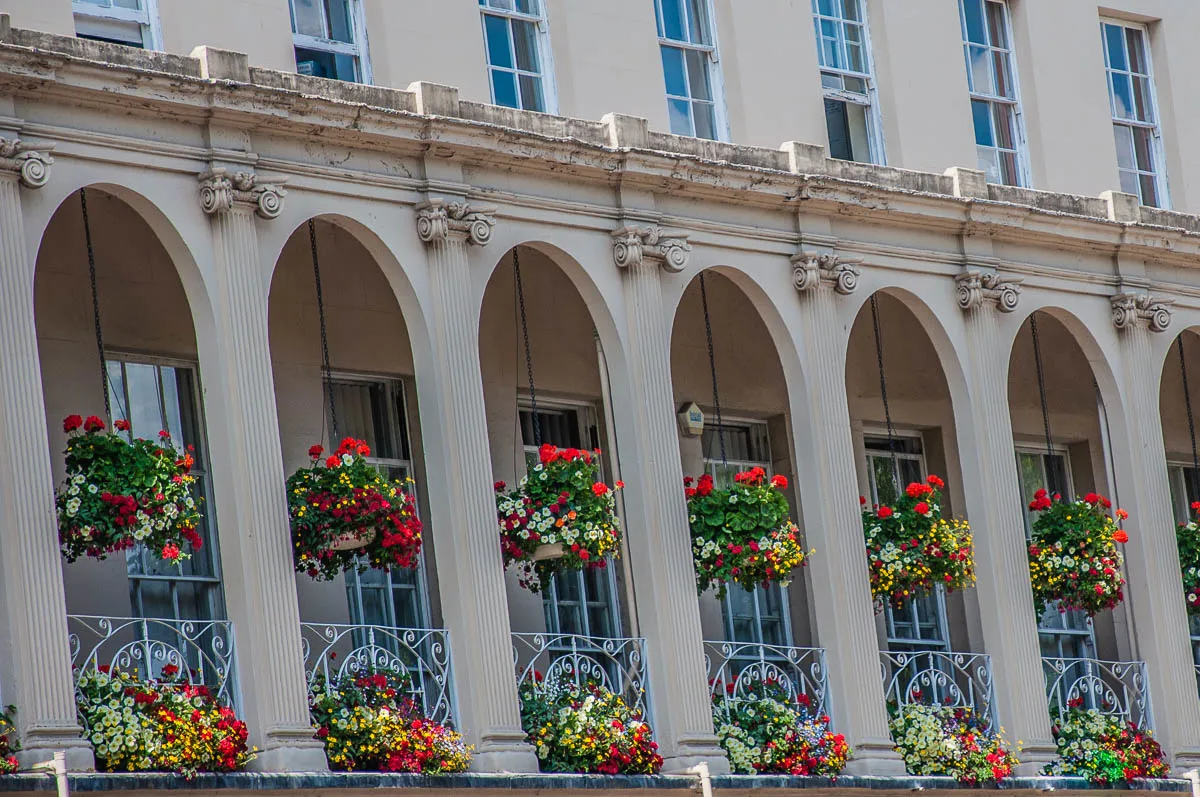
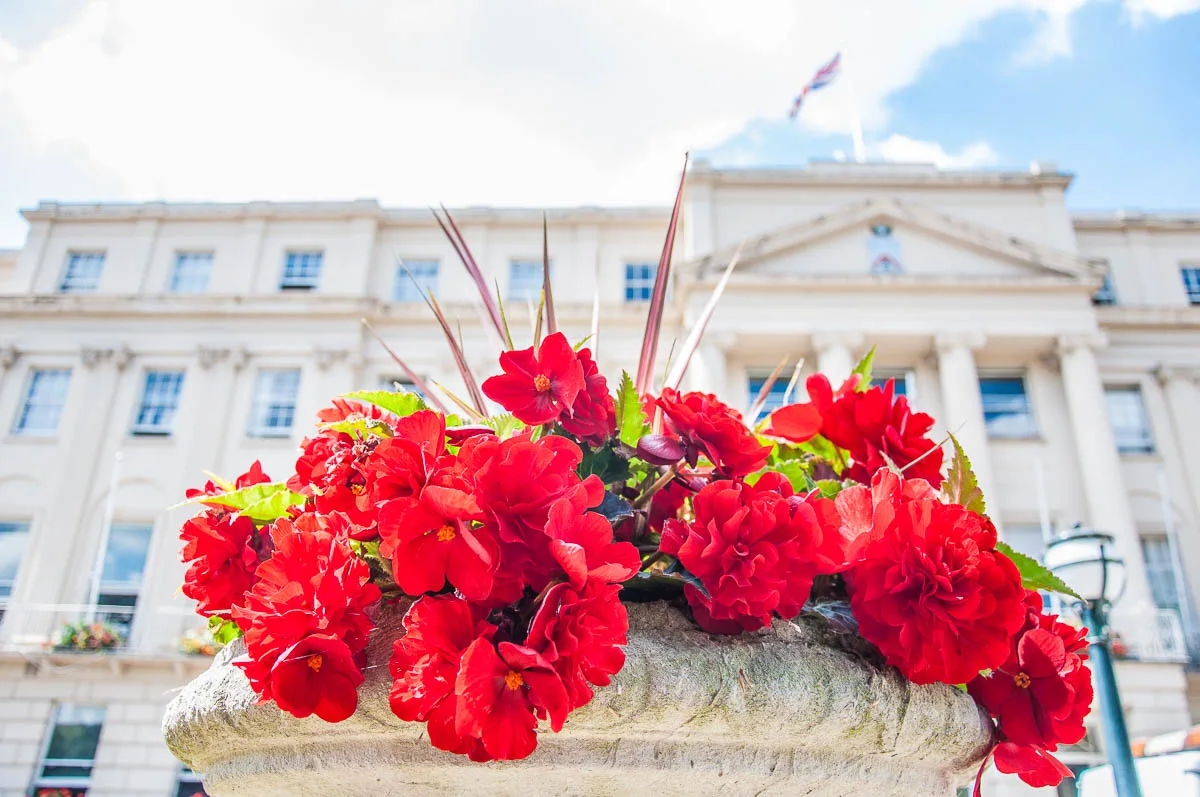


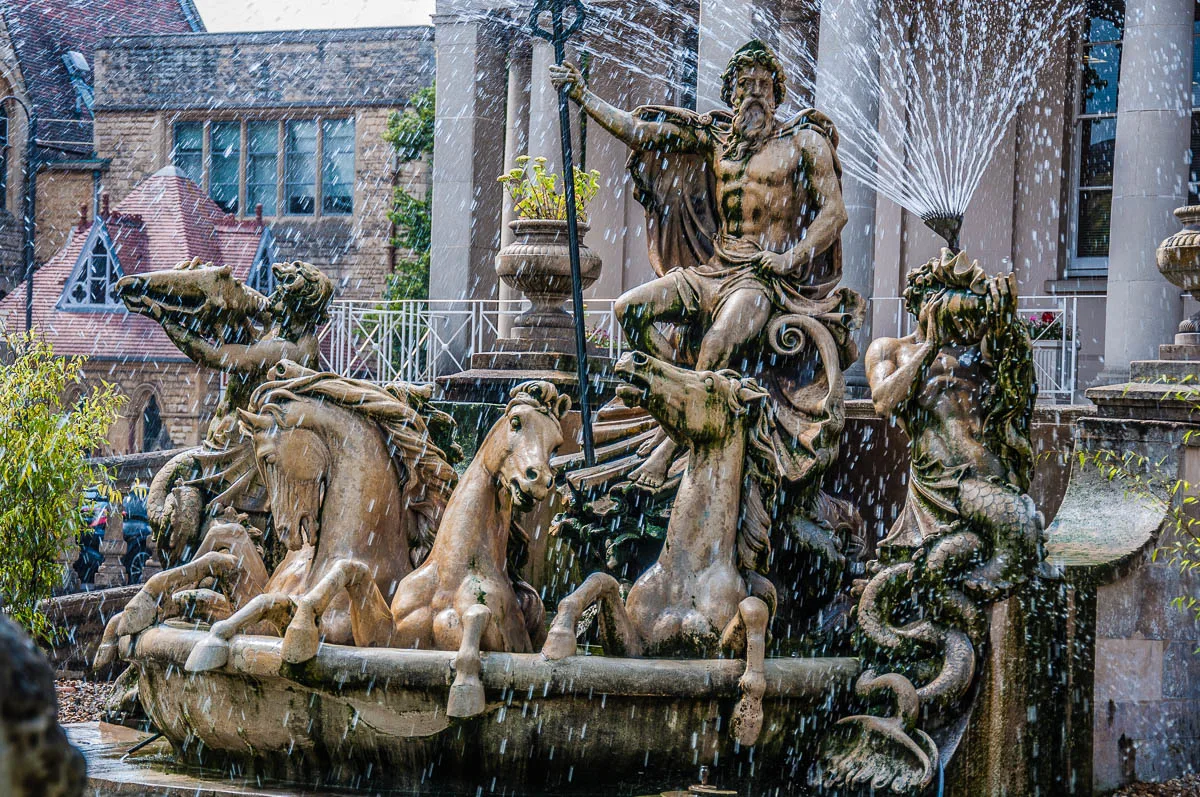


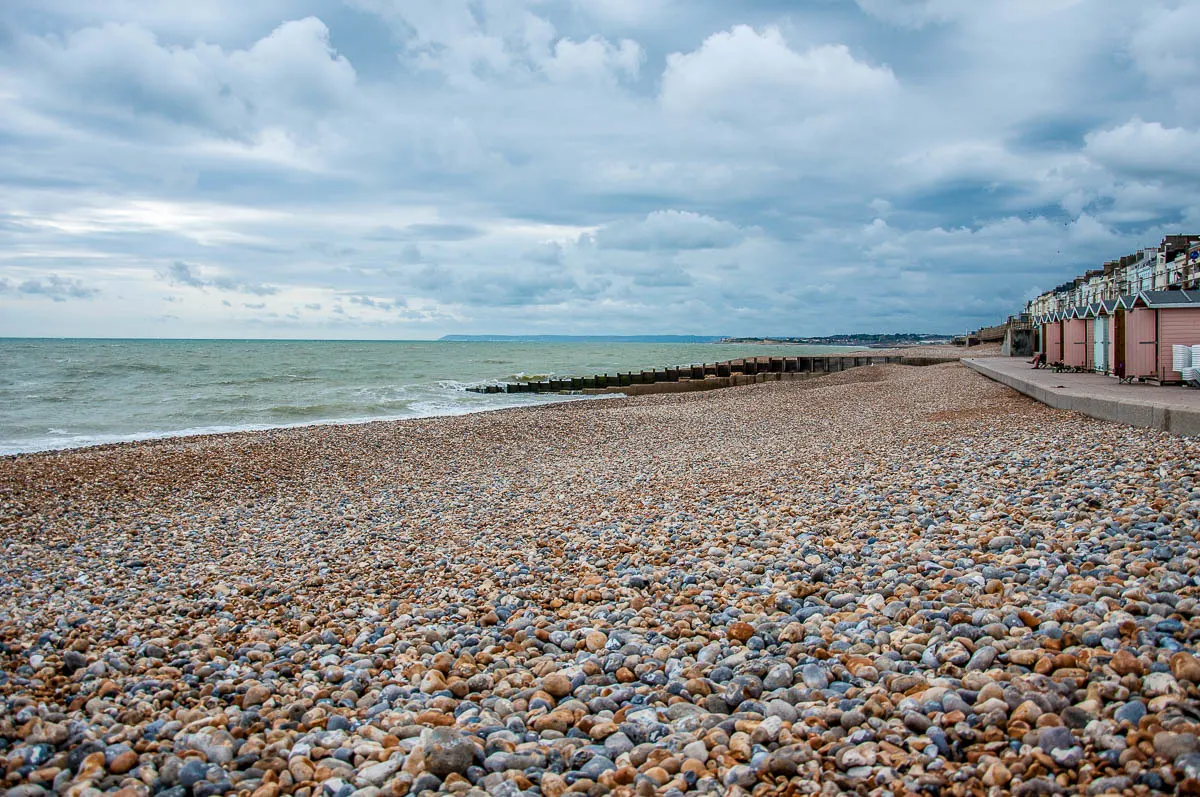

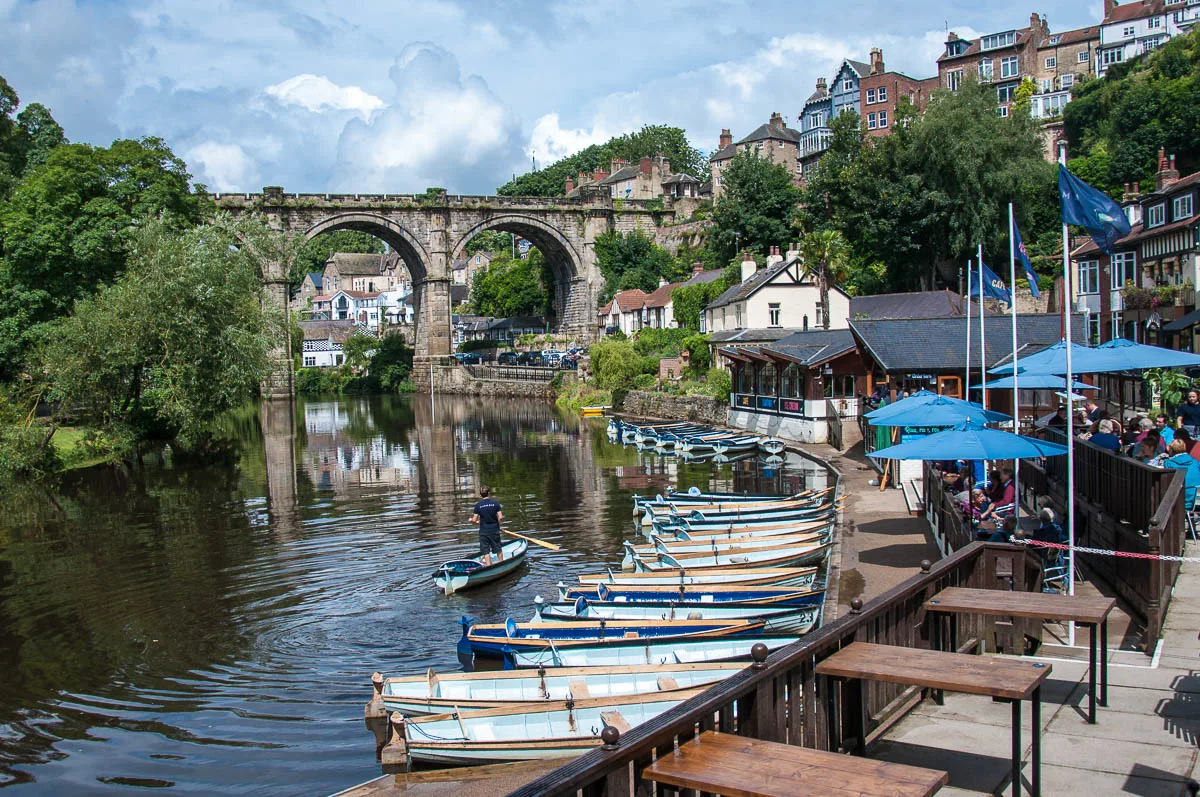
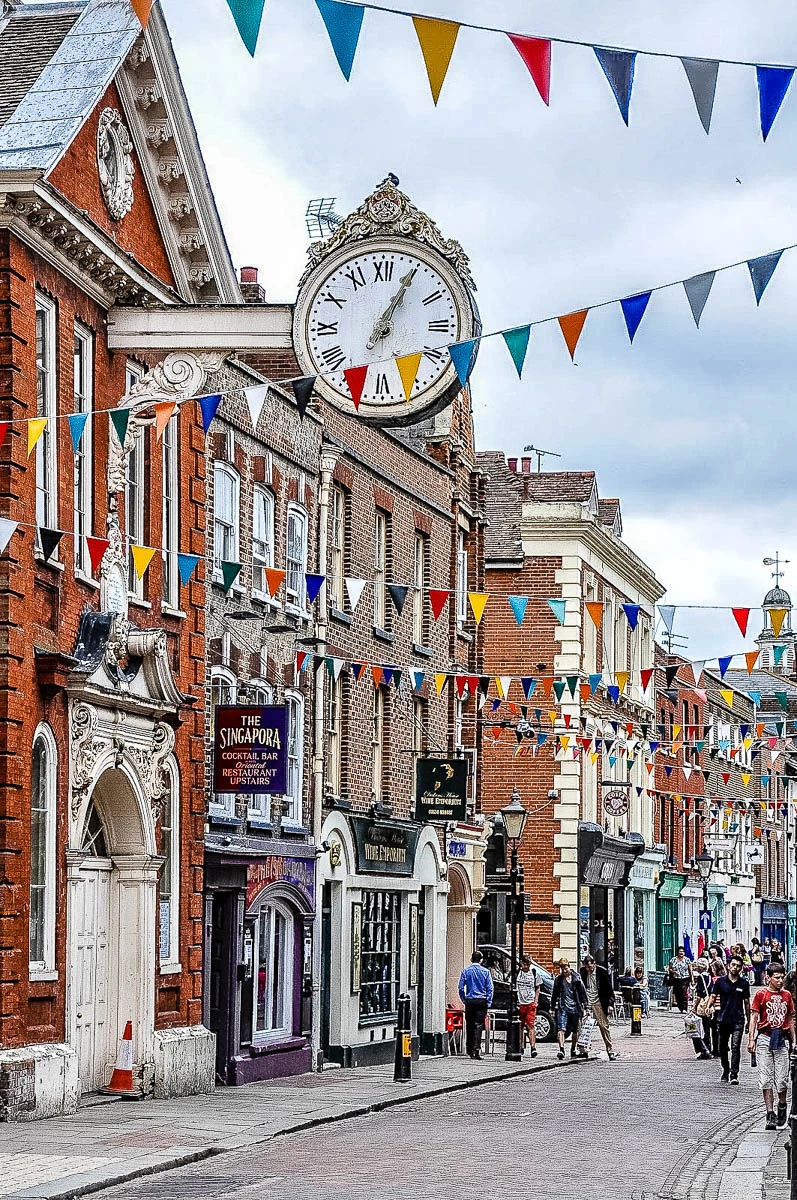
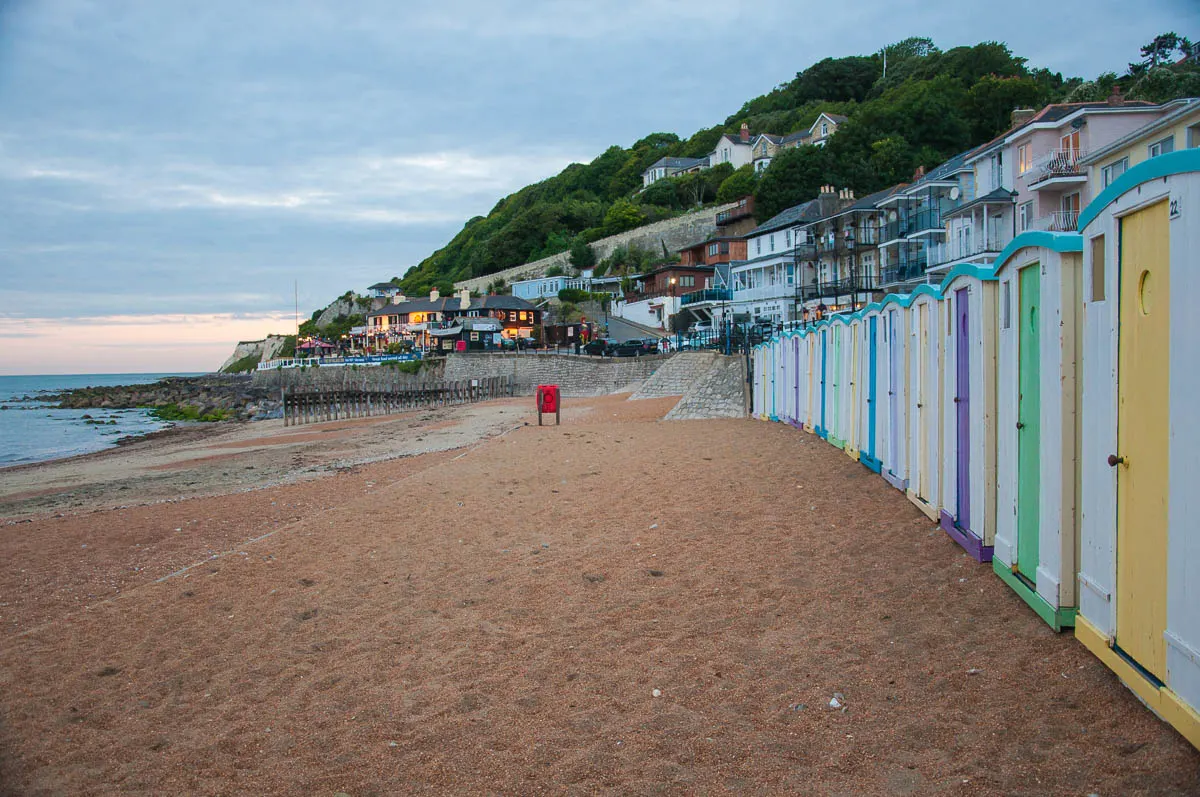
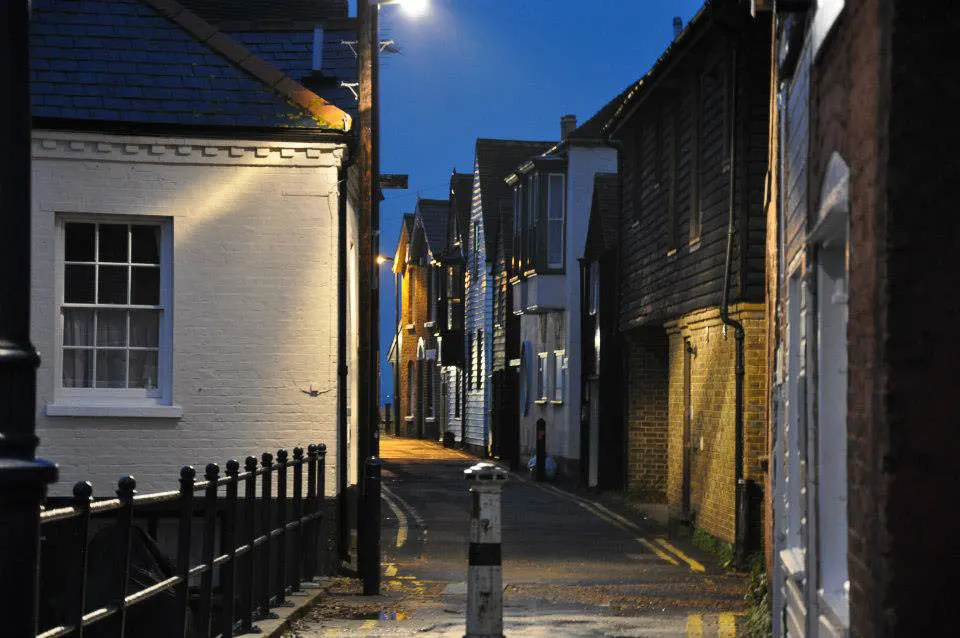
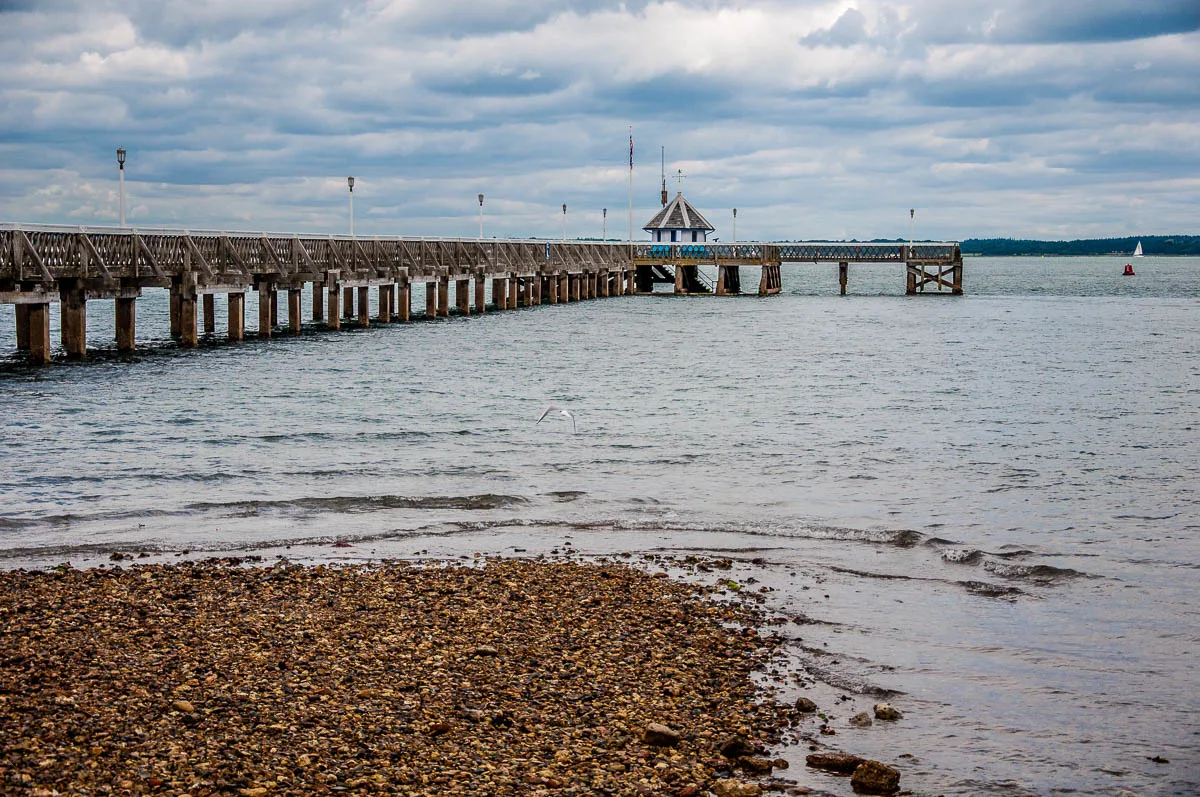
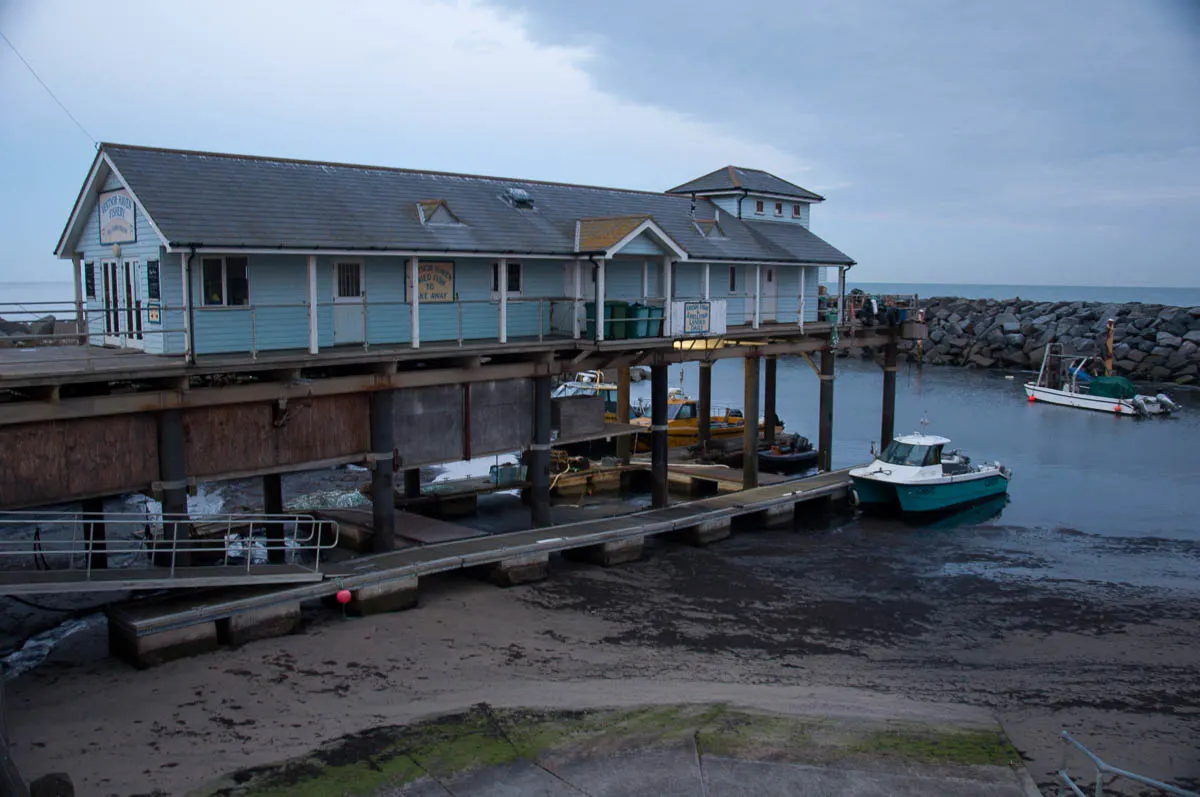

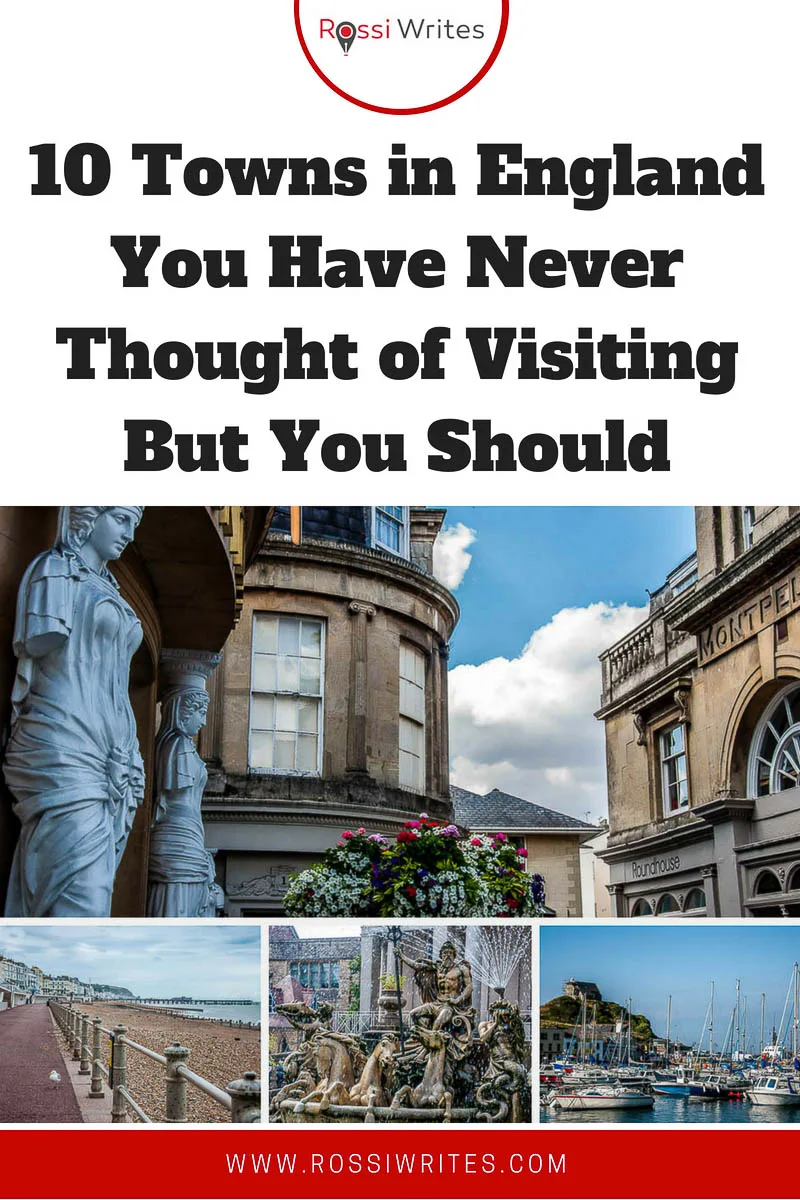
John Geen
Thursday 2nd of May 2019
Hi Rossi,
May I suggest Shrewsbury in Shropshire for your list.It's a great town full of half timber houses and a lovely park.We have visitors who are always welcome but never too many.So we are not a touristy town.Moved here from London over 40 years ago and never regretted.
Best wishes John
admin
Thursday 2nd of May 2019
Dear John,
Many thanks for your suggestion. Shrewsbury sounds lovely. Hopefully we will manage to visit it during our next trip to England this summer.
With best wishes,
Rossi :)
Steve
Sunday 7th of April 2019
Rossi..nice choices of towns...but visit Chester..and visit Ludlow... lovely places. Best wishes Steve Kelly
admin
Monday 8th of April 2019
Thank you for the recommendations! I will add them to my bucket list for this year's visit to England. Best wishes! :)
Rossi
iain
Tuesday 12th of March 2019
Rossi, thanks for this, and especially for the reminder to visit Knaresborough. When on business in the north of England I travelled on a train passing through the town back in the 1990s and was astonished, when passing over the viaduct, at how a picturesque place could possibly have escpaed the attention of us Brits! I made a vow to come back as a tourist and never have done. Time to plan a trip up there! iain, London
admin
Tuesday 12th of March 2019
Thank you for your kind words and for stopping by. Knaresborough, really, is charming. Have a great time exploring the town and the area. With best wishes,
Rossi
Ella Murton
Saturday 9th of March 2019
Hiya, I was just reading your review on Whitstable, I visited a lot as a child, and I absolutely love the town. But I think you might be wrong when you say you can see France, as it is in North Kent, and from the coast you can only see Essex. I do love your recommendations for other towns in England though, and definitely want to visit them now!
admin
Saturday 9th of March 2019
Hi, Ella! Thank you so much for stopping by and for your comment. You are absolutely right! I have amended the text above. It's just a pity that for all those years that I have been going to Whitstable, I really did have this impression that you can just about glimpse France on the other side. My bad! Thank you again and Best wishes! :) Rossi
Jay
Friday 1st of February 2019
Hi Rossi - thank you for the interesting list and great descriptions. Many of these towns are close to large cities, too, so would be perfect for day trips away from the tourist track.
admin
Saturday 2nd of February 2019
Yes, I absolutely agree with you Jay. I have provided travel times for each of the ten towns above from the nearest large cities so that people can easily plan for a day trip. Thank you for stopping by and commenting. Best wishes,
Rossi :)